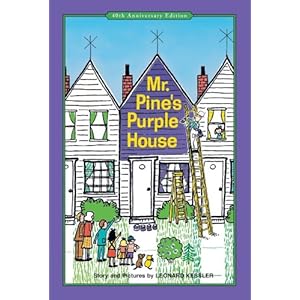This is what the students have been working on so far:
Kindergarten - After exploring lines and shapes they were introduced to texture by creating leaf rubbings in various Autumn shades. It was a bit difficult for students to create a clear rubbing since they had to use both hands to steady the paper and to use the oil pastel, however they enjoyed seeing their leaves magically appear on the top (for a different spin on the texture concept I might use hand-made texture plates or create a collage using scrap fabrics and materials). Now they are exploring color! This will be a three class sequence where students will learn that blue+yellow=green, blue+red=purple, and red+yellow=orange. We began by first discussing all the things that are naturally blue and yellow (the sky, water, bluebirds, blueberries, the sun, bananas, sunflowers, lemons, and so on). One row of students began with the blue paint and the other row of students began with the yellow paint. After 10-15 minutes we switched colors and before you know it they realized that by mixing blue and yellow you make green! At the end of class we discussed our discovery and went over a few things that are naturally green (green beans!!!).
First Grade - We began our Wild Things project by reading the Maurice Sendak book and going over the different animal features each Wild Thing had (like horns, scales, feathers, etc.). We talked about what shapes we might use to draw the head, body, arms, and legs of our creatures and the various lines we might use to fill in their bodies. Next week the students will use watercolors to paint in their creatures. We'll talk about the difference between watercolors and regular paint, how to dip the brush in water first and then in the paint, how we can tell if we have enough paint on our brush, and so on. It's really quite a process when you break it down!
Second Grade - The students are almost done with their Autumn Leaves paintings. I introduced them to the concept of warm and cool colors (yellow, orange, and red for leaves/blue, green, and purple for the background). We looked through a few photos from the Ken Robbins book Autumn Leaves and realized that leaves aren't just one solid color but go through a gradual process of changing from one color to another. Afterward, we discussed what the term "background" might mean (the space around the subject) and I demonstrated using a brush and paint to first carefully and slowly outline a leaf and then paint the space surrounding it. I think this might be a good technique for Second graders since they are still mastering material and tool use. Once they are Third graders they could be introduced to the wet-on-wet technique (I actually began introducing this technique to one class but opted not to for the second class, since I was afraid the paper they were painting on might not be able to support that much water).
 |
| Second Grade Autumn Leaves |
 |
| These were all drawn from observation. |




















